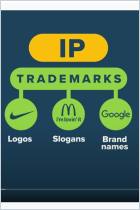
Recommendation
In the interests of safety, we’ll refrain from quoting this fine book by Deborah E. Bouchoux, a specialist in intellectual property who teamed with AMACOM to create that rarest of volumes: a straightforward book about law that is simple to read (it’s a formula she should patent). This comprehensive volume covers the nuts and bolts of U.S. patent and trademark law. It also gives advice on how to protect your intellectual property and avoid infringement, and reports on the latest patent trends in high tech. Of most concern for general business managers, Bouchoux reviews how (and why) to conduct intellectual property audits within your organization. With intellectual property emerging as the new corporate treasure of the knowledge economy, getAbstract suggests that research and development managers and executives of every stripe should study this volume carefully. Why should your attorney be the only one who understands what you really own?
Summary
About the Author
Deborah E. Bouchoux is in-house counsel for an information technology company. Her specialty is intellectual property. She also is an instructor in the legal assistant program at George Washington University. Ms. Bouchoux has authored a number of textbooks on topics as diverse as intellectual property, legal research and writing, and forms of business organizations. She resides in Great Falls, Virginia.

















Comment on this summary